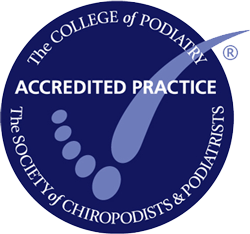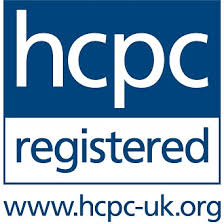Ingrown Double Nails Retronychia
Ingrown double nails termed retronychia, is an uncommon nail condition. Unless, one knows the term retronychia, it is hard to find much online information regarding this unusual clinical presentation. Plenty found on the more commonly seen ingrown nails, but scant information about retronychia. This interesting topsy turvy ingrown nail condition is often misdiagnosed and inappropriately treated.
So, what is retronychia?
Retronychia is when a new nail plate emerging from the nail matrix grows backwards instead of forwards. Bizarrely another nail plate can emerge alongside it, resulting in several plates being stacked on top of each other. This presentation is more commonly observed, but not when the plates grow backward to cause pain and inflammation. The nail or nails grow into the proximal nail fold. This is similar in pathology to a normal ingrown nail, whereby the toe becomes infected and over-healing granulation tissue can develop (hypergranulation) in more chronic cases.


How does retronychia happen?
Retronychia is caused by a disruption to a growing nail plate. Trauma is the main etiological cause e.g, direct impact to the toe and nail plate or repeated micro-trauma from ill-fitting shoes or repetitive activities like dancing and jogging. Patients with systemic conditions e.g. arthritis and thrombophlebitis have reported cases of retronychia. It is more common in women and it affects mainly the big toes.
Trauma causes the distal emerging edge to stop in it’s tracks and not grow forward. To compensate a new nail plate grows beneath it, which will either grow forward or get stuck too. Eventually, the proximal nail fold can lift up, become inflamed and irritated. A course of antibiotics will not solve this problem.
How do you treat retronychia?
The nail, nail plates need to be surgically removed to remove the source of irritation. Once avulsed the nail bed is allowed to heal and a single new plate encouraged to grow forward. The chances of getting a repeat retronychia are slight, but the original cause must be addressed. Repeated micro-trauma to a toenail will cause matrix and nail bed damage. A nail plate can become thickened (gryphotic) and distorted. The nail plate may start lifting up, detaching from the nail bed (onycholysis) or ingrow. Nail plates may be seen as tough, but are actually quite delicate structures which need looking after.
A Case of Compleet Retronychia
Patient A; healthy 18 year female presented with 2 painful ‘ingrown’ big toenails May 2021. She had noticed her toes were swelling up 6-8 weeks earlier. Her GP prescribed antibiotics, but the inflammation proximal to the nail matrix did not resolve. An inconclusive swab was taken, and patient A ended up visiting A and E due to the pain and bleeding. Advice was given to seek the professional help of a podiatrist.
The podiatrist quickly identified retronychia. This case was by now chronic with pronounced hypergranulation tissue. It required urgent nail surgery. Patient A was duly booked in, and the offending nails removed. A total of 4 in all; 2 per toe! Healing would be quick, but a new ‘normal’ single nail plate will take 9-12 months to fully grow forward.
Conclusion
Patient A is unable to say what caused her retronychia. She recalls no incidence of trauma or wearing ill-fitting footwear. It would be interesting to review her in clinic to assess whether she has an unidentified biomechanical issue? Maybe she locks the big toes when she walks, has lowering of her medial arches (pronation)? This could cause mechanical stress on the nail plates when wearing shoes? Worth checking out.
Due to the rarity of ingrown retronychia, her condition was misdiagnosed as a paronychial infection. This is when there is a bacterial infection at the proximal base of the nail plate. The prescribed antibiotics would not resolve this condition, but the skill of a podiatrist could and has. Patient A is now much more comfortable.









